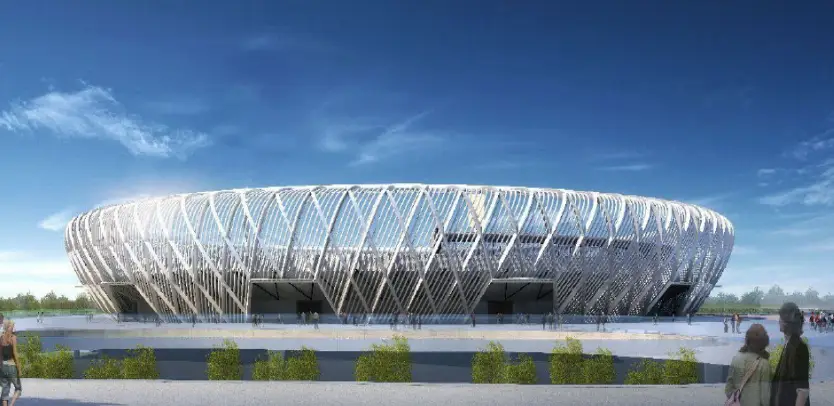Effective sports lighting design is critical for optimizing athlete performance, ensuring spectator comfort, and meeting energy efficiency goals. Modern requirements extend beyond basic visibility to encompass advanced metrics such as glare control, spectral adaptability, and smart system integration. Drawing insights from research on indoor sports facilities, LED retrofits, and human-centric design, this article outlines key principles for sports lighting systems.
1. Uniform Illuminance and Glare Management
Uniform light distribution is essential for fair play and safety. In volleyball courts, studies demonstrate that non-uniform lighting disrupts athletes’ ability to track fast-moving objects like shuttlecocks, increasing error rates and injury risks. LED luminaires with volume-scattering diffusers (transmittance >70%) and high-reflectivity cavities (>85%) improve illuminance uniformity by up to 300%, reducing glare while maintaining consistent light levels. The Unified Glare Rating (UGR) model, validated for indoor sports, correlates strongly with subjective discomfort, though combining source luminance and background luminance provides better predictive accuracy.
2. Energy Efficiency and LED Adoption
LED retrofits have revolutionized sports lighting efficiency. For example, replacing 400W discharge lamps with 126W LED fixtures reduces energy consumption by 70% while delivering superior light quality. Advanced optical materials, such as micro-lens arrays inspired by automotive lighting, enable precise beam control for sports like soccer or tennis, minimizing spill light and enhancing directional accuracy. However, retrofitting requires careful planning to avoid compatibility issues, as seen in cases where poorly integrated LED replacements led to post-installation performance degradation.
3. Dynamic Controls and Adaptive Systems
Smart lighting systems enhance flexibility and energy savings. At the Langley Events Centre, color-changing LEDs paired with wireless controls (e.g., Zigbee) enabled operators to switch between high-intensity match lighting and theatrical effects, improving spectator engagement while reducing energy use during downtime. Occupancy sensors and daylight harvesting, as tested in federal buildings, can achieve 40% energy savings in sports facilities with low natural light penetration. Centralized control platforms also simplify maintenance, addressing the growing complexity of managing solid-state lighting systems.
4. Human-Centric Design and Visual Comfort
Lighting quality directly impacts athlete performance and spectator experience. Research on badminton players shows that LED systems significantly improve subjective brightness satisfaction compared to traditional lighting, with reduced visual fatigue during prolonged matches. Metrics like vertical illuminance ratios and correlated color temperature (CCT) tuning help replicate natural daylight cycles, aligning with circadian rhythms for nighttime events. For outdoor venues, minimizing light spill through directional luminaires is crucial to preserving dark-sky compliance and reducing ecological disruption.
Modern sports lighting requirements demand a holistic approach that harmonizes technical precision, human factors, and environmental stewardship. From glare-controlled LEDs to AI-driven adaptive systems, the field is advancing rapidly. Future efforts must prioritize interdisciplinary collaboration to refine spectral standards for athlete performance and democratize sustainable solutions globally. By addressing these challenges, designers can create lighting systems that illuminate both the game and the path toward a greener future.
